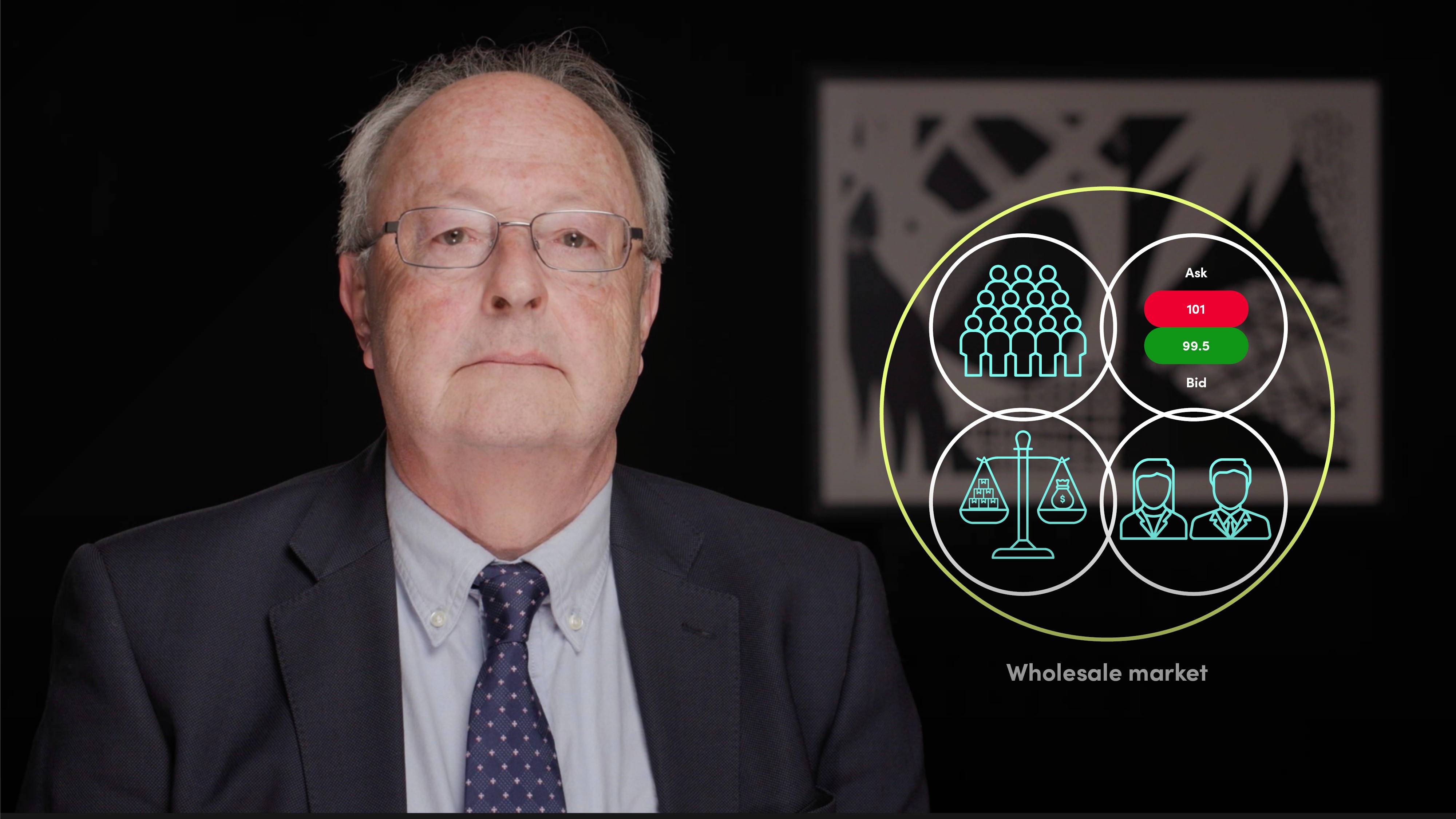
Market Risk in the Trading Book

Paul Newson
20 years: Market Risk
The principal objective of this pathway is to introduce the concept of market risk, with a particular reference to how it impacts banks. In the first video of this five-part video series, Paul focuses on market risk in the trading book.
The principal objective of this pathway is to introduce the concept of market risk, with a particular reference to how it impacts banks. In the first video of this five-part video series, Paul focuses on market risk in the trading book.
Subscribe to watch
Access this and all of the content on our platform by signing up for a 7-day free trial.

Market Risk in the Trading Book
19 mins 38 secs
Key learning objectives:
Understand what a wholesale market is and the wholesale markets banks are likely to operate in
Outline how market risk impacts banks trading books
Overview:
Market risk to a bank is the risk of an adverse financial consequence arousing from changes in the wholesale market prices of any positions it might hold. Market risk is prevalent in all financial transactions and includes interest rate risk, foreign exchange risk and equity risk. Market risk can manifest in the trading book and banking book. Trading book positions are those positions taken in the wholesale markets either to support market making activities or to benefit itself from short price changes.
Subscribe to watch
Access this and all of the content on our platform by signing up for a 7-day free trial.
What is a wholesale market?
A wholesale market is a market:
- Comprising a reasonably large number of willing buyers and sellers
- Where the prices quoted are readily observable
- Where the participants may be regarded as market professionals
- In what is being traded is fungible (quantities of something, rather than specific items)
If these conditions are met, the market may be regarded as liquid, meaning any potential buyer or seller can generally be assured that they will find a counterparty who will deal at close to the average price across the market.
Within a market there are three types of participant:
- Market makers - those who quote two way prices for whatever is being traded
- Price takers - the users of the market, people who go to the market to buy or sell whatever the market trades
- Speculators - those who have no direct requirement for whatever is being traded, but will take positions because they believe that the price will move in their favour.
Participants of wholesale markets can take short or long positions. However short term positions are considerably more risky.
What wholesale markets do banks operate in?
Foreign Exchange – to buy or sell different currencies.
Interest Rate – covering those instruments or products whose prices are largely driven by the level of interest rates.
Credit – covering instruments whose price may also be determined by the credit risk associated with the issuer of the instrument.
Equity – the market for shares in publicly quoted companies.
Commodities – the various markets for high volume trading in raw materials.
The reason that banks are likely to have exposures to these markets is that banks exist to service their clients and customers.
How does market risk impact banks trading books?
A bank’s trading book is defined by the regulators as comprising any positions taken in wholesale markets either to support market making activities or to benefit itself from short price changes. Bank regulators now require the trading book to be managed entirely separately from the rest of the bank. This is so that any losses in the trading book do not impact the rest of the bank or the wider banking system.
The main market risk in a trading book is the risk of losing money if the market price falls. A long position will incur a loss if the price falls; a short position will lose money if the price rises. In the trading book, such losses are immediately reflected in profit and loss.
How can banks limit market risk in trading books?
- Positional limits - speculative positions can easily be reduced if the bank is concerned about the level of risk
- Overall Value at Risk limits to assess likely risk in normal market conditions
- Stress tests to assess more unlikely scenarios
- Stop loss limits to cap any accumulated losses
Subscribe to watch
Access this and all of the content on our platform by signing up for a 7-day free trial.

Paul Newson
There are no available Videos from "Paul Newson"



























